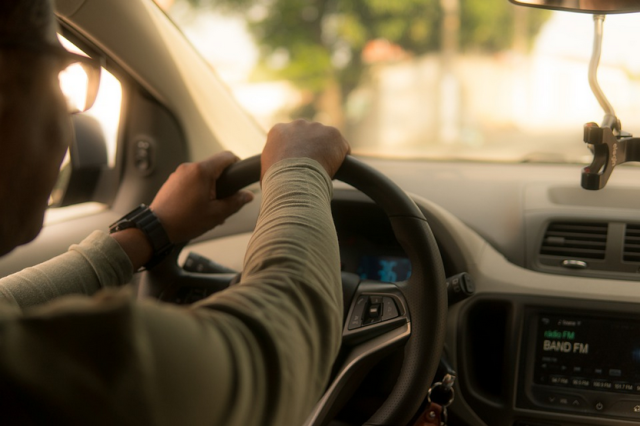It is almost a year since I published this piece that merely re -echoed the United Nations (UN) drive to kill excessive speed globally. Although the UN and the World Health Organisation (WHO) has consistently identified excessive speeding as the number killer on global roads, it heightened its position against excessive speed when in 2021, it sought the buy in of Government as well as road users to tilt the trend of road traffic crashes and deaths in urban /built up areas by advocating for a reduction of speed from 50kmph to 30kmph.
This was the trust of the piece I published which is being rehashed today following certain developments on our major corridors as well as tragedies that have occurred within city centers. I have chosen to rerun this piece although with a slight update on some of these ugly developments which has claimed lives. Let me first start with the most recent tragedy which occurred on 19th June,2022.
I must confessed that I was startled by the news of the tragic death of 18occupants who died as a result of a road traffic crash which occurred at 0500hours at Gidan- Kwano about six kilometers from Minna, the Niger state capital along Minna- Bida road. This tragedy is certainly not the worst in terms of deaths as followers of road safety reportage would have read the events that happened in Bauchi as well as Kano just to mention a few.
In the case of the crash in Bauchi, on 12 march 2022, a crash occurred along Zaria Kaduna road by Tariyan Sarki Zaria .It was alone crash involving a Toyota corolla killed 10people while one was injured. Speed was the probable causative factor. On 28 February, 2022 12 people were burnt to death in a fatal crash along Kano Zario road. Similarly, 20people were also burnt in a speed related crash which occurred in 19 April, 2022 along the Bauchi-Ningi road.
These are just snippets of crashes all attributable to excessive speeding on major corridors. The situation is not different from urban or built up areas which has prompted the Federal Road Safety Corps to redesign its accident reporting formats to properly capture incidences within the city centers. These developments underscored the dire need to rethink this ongoing campaign to achieve our goals as a nation to cut down fatalities. Please enjoy last piece which is a precursor to a piece I hope to share thereafter.
On Tuesday 18th May, 2021, I was privileged to be a guest on Kakaaki, the morning breakfast show on the African Independent Television (AIT). The mission was to raise awareness on the 6th Global United Nations Road Safety Week which was flagged off globally on 17th May 2021 and would run till 23rd May, 2021. Dr Sydney Ibeanusi, Country Director, the United Nations Decade of Action on Road Safety was also on the programme. The theme for this year is one that excites me among other themes. The focus is on cutting down speed which is identified as the number one killer globally. Excessive speed in built up areas is the sub focus with the theme, The Streets for life: #love30.
Before I dwell on the essence, let me first bring you up to speed on the how we have fared so far in Nigeria. The records provided by the Federal Road Safety Corps reveals that road traffic crash statistics comprising of casualties (persons killed and person injured) for the period January to December, 2018 in Nigeria was 9,741 road traffic crashes which resulted in an increase of 3.8percent from 2017. These crashes included 2,739 fatal cases, 5,849 serious cases, 5181 fatalities, denoting an increase of 1.2percent from 2017. The report also reflected speed violation as the major cause of road traffic crashes which accounted for 51.7percent of the total reported.
The Federal Capital Territory Command which is under my watch as Zonal Commanding Officer recorded the highest number of road traffic crashes in 2018 with 1,051 cases representing a reduction of 5percent compared with the figure in 2017. These crashes involved 6,069persons with 2,347 sustaining various degree of injuries and 281 deaths. Closely followed was Kaduna with 830 cases of crashes involving 6,804 crash victims out of which 3,300 sustained injuries while 679 died. States such as Borno, Bayelsa, and Cross River States recorded low crashes of 46, 53 and 56 cases respectively.
The snippet of speed related crashes that I have given is not just peculiar to Nigeria but cuts across other parts of the globe including the developed and low as well as middle income countries especially Africa. I have treated excessive speed severally on this page. I have tried to remind people and road users of the provisions of the National Road Traffic Regulations,2012 which specifies the speed limits on various roads as well as speed limit of various categories of vehicles. For reminders, the Regulations provides that the maximum speed in Nigeria is 100km/h. The same Regulations stipulates that 100km/h is this maximum speed is for cars on the express while the limit for taxis and buses is 90km/h. The speed limit for articulated vehicles is 60km/h.
The same Regulations provides for the appropriate speed limit for built- up areas which is my focus and also the focus for the Global road safety week. It provides a maximum speed limit of 50km/h for cars, taxis and buses as well, tankers and trailers are to do 45km/h while tow vehicles are 45km/h while towing and 50km/h when not towing. While the provisions explicitly spell out these rules, there are concern that compliance is a challenge while these signs according to some observers are rarely seen on some of our road.
The absence of appropriate road furniture was my concern when I wrote on a piece I titled, Naked Roads. In fact, a good friend who heard me on AIT on Tuesday could not stop laughing when I drew a correlation between roads without appropriate road furniture and a lady without her makeup. This is why the global clamor is to rejig the speed factor and tilt the trend of road traffic crashes and deaths in keeping with the United Nations Decade of Action which seeks to cut down road fatalities by 50percent.
I told you that street for life is the theme. The argument is that low speed streets where people and traffic mix makes for streets that are healthy, green and liveable and therefore saves lives. Low speed streets save lives and are the heart of any community. The global plan is to engage policymakers to act for low speed streets worldwide, limiting speeds to 30 km/h for cities, towns and villages worldwide. The strategy is a precursor to a 2022 meeting of World leaders where this message is expected to resonance for their buy in to demand reduction of appropriate speed in built up areas.
Before we dwell on the significance of the campaign thrust, it is imperative for us to first deal with certain myths and also facts behind this focus 30k km/h. First, the UN maintains that addressing the risk of death in road traffic is fundamental to achieve the Sustainable Development Goals (SDGs), specifically those affecting health security, sustainable cities, poverty, and reducing inequalities among and within countries. Policies that tackle the of impact road traffic, and create environments for safe, sustainable and inclusive transport options, also unlock action for protecting the climate and gender equality too.
The UN also maintains that paradigm shift in how streets are designed, starting with low speeds where people and traffic mix, makes streets safe, accessible, enjoyable and equitable for all road users. It delivers multiple benefits for all whilst accelerating action across interlinking SDGs. The actions include infrastructure, design, enforcement, vehicle technology and public awareness. I told you there are some myths that as a safety professional I would say are unfounded and without any basis. Let us deal with these myths as spelt out by the United Nations. I must however state clearly that the views are not mine but are lifted up to share with my readers especially parents who should be concerned over the safety of vulnerable road users such as children, aged parents, and people with disabilities.





